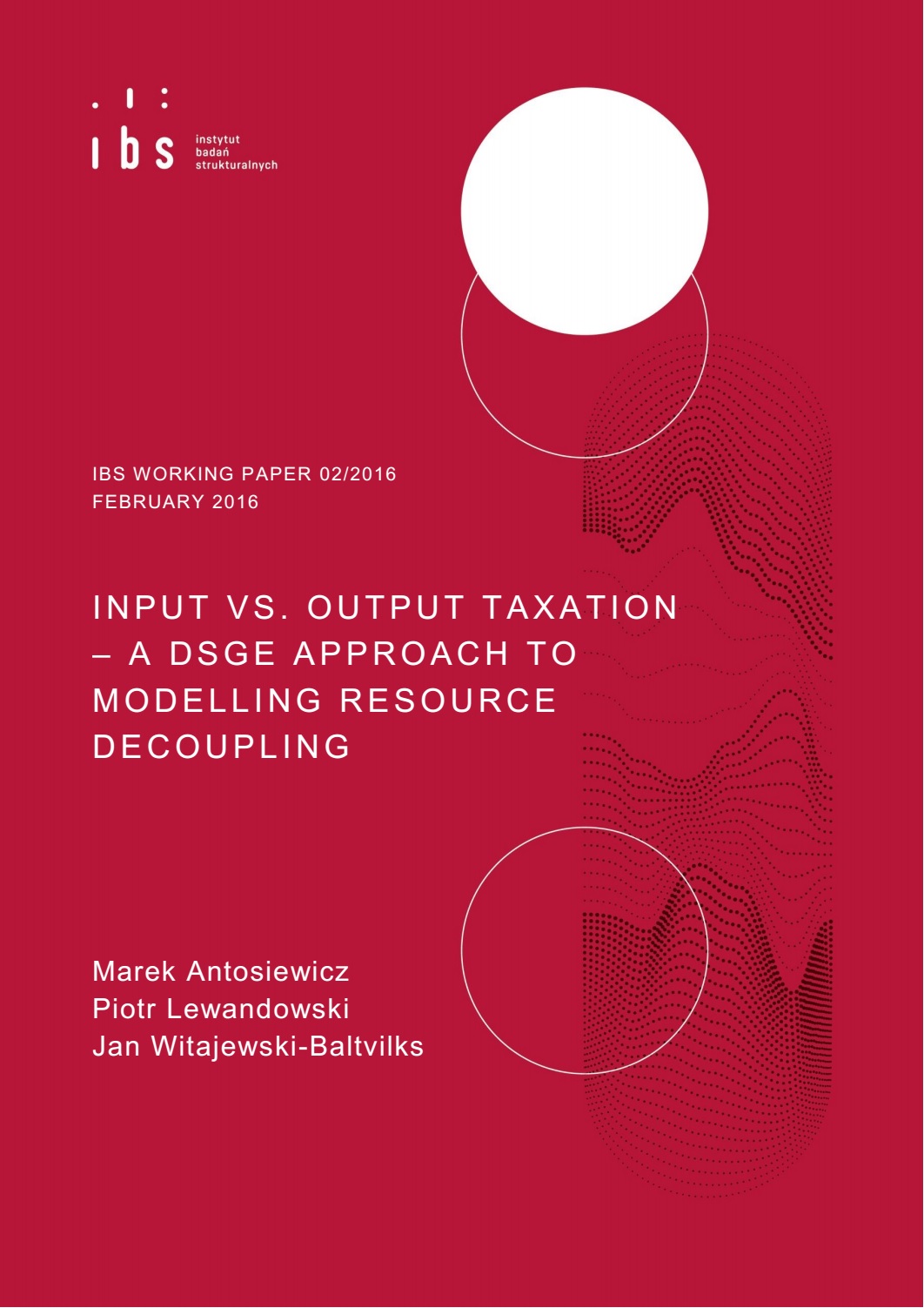Environmental taxes are a crucial instrument aimed at reducing resource use through lower production losses, resource-leaner products and more resource-efficient production processes. In this paper we focus on material use and apply a multisector DSGE model to study two types of taxation: tax on material inputs used by industry, energy, construction and transport sectors, and tax on output of these sectors. We allow for endogenous adaption of resource saving technologies. We calibrate the model for the EU27 area using IO matrix. We consider taxation introduced from 2021 and simulate its impact until 2050. We compare the taxes along their ability to induce reduction in material use and raise revenue. We consider the effect of spending this revenue on reduction of labour taxation. We find that input and output taxation create contrasting incentives and have opposite effects on resource efficiency. The material input tax induces investment in efficiency improving technology which in the long term results in GDP and employment by 15-20% higher in comparison to comparable output tax. We also find that using revenues to reduce taxes on labour has stronger beneficial effects for the input tax.

The paper has received funding from the European Union’s Seventh Framework Programme under grant agreement no. 308674 and from the scientific budget for the years 2012-2015 for supporting co-financed projects. Usual disclaimers apply. All errors are ours.
Institute for Structural Research (IBS); Faculty of Economic Sciences, University of Warsaw

